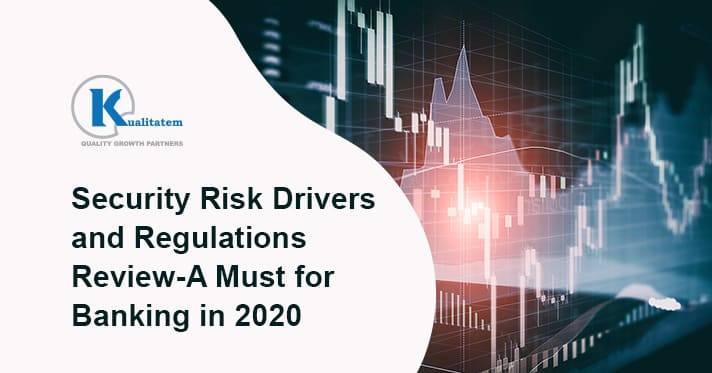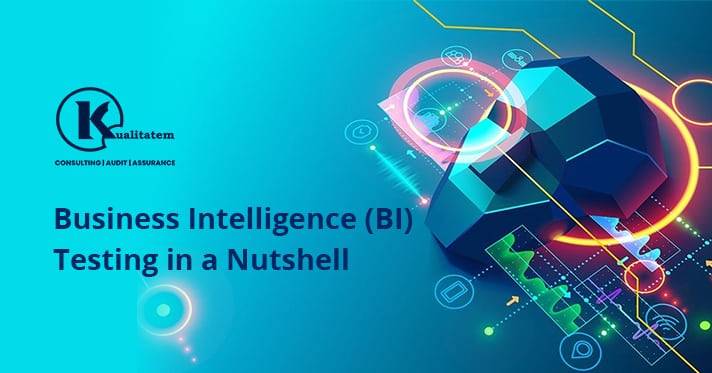Banking in 2020: Security Risk Drivers and Regulations Review

- May 20, 2020
- HibaSulaiman
The fast and technologically advanced challenges in the field of the financial industry have given birth to a lot of challenges. Moreover, digitalization has been adding to these challenges for a few years. All of this together has helped every cyber security testing company to come up with new solutions to solve the complex security issues. Although these companies are doing their best to protect financial organizations and individuals from falling into traps of cybercriminals, without the help of government, there is not much that can be done.
Fortunately, the governments of the majority of countries all over the world decided a long time ago to support this sector. They have made and implemented a lot of cybersecurity rules safeguarding lots of organizations and helping cybersecurity testing companies to keep devising new ways to protect sensitive data. Every year comes with some new guidelines and regulations from governments to ensure the online safety of financial organizations and the general public. Some risk drivers are defined and regulations are made for the betterment of the banking sector this year too. If you would like to know more, we have gathered full details of new security risk drivers and regulations that you must follow to ensure your online safety.
Risk Drivers a Bank Must Lookout For
If you believe that risk drivers are always huge and can be avoided easily, the chances of you becoming a victim are even greater. Cybercriminals do not go for large loopholes as they know they are covered easily. However, they are always looking out for minor entries in your system that you consider not too fatal. These minor risk drivers give way to huge risks and can become the reason for the whole system to be compromised. Here are a few risk drivers every bank is suggested to look out for this year:
A Country’s Sustainability Issues
Coronavirus pandemic has hit hard almost every country present on the globe. It has brought down even the major powers of the world to their knees. The political, debt, and economic sustainability of a country is guaranteed to play a huge role in the online safety of the banks and its customers. If your country is lucky to not have been affected a lot, you are lucky to not face these issues at a larger scale. However, if your country is economically weak, get ready to face challenges. Not just that it can easily affect other banking operations including profitability prospects and credit risk.
Sustainable Business Model
The banking sector is one of the most famous and successful businesses around the world. However, no business can become successful if it does not have a sustainable business model. Remember, prolonged low-interest rates coupled with intense competition weigh can easily stop a bank from investing in its cybersecurity health. While digitalization can be an easy solution for banks to become cost-efficient and empowered to offer new services and products, they will have to rethink and redesign their business models and strategies. Digitalization is even leaving lots of banks crippled and hopeless to invest in a cyber security testing company. While it might seem like something not too harmful, it can easily bring down the whole bank within a few minutes.
Banking Regulations Review 2020
The majority of the countries all over the world make a new list of regulations for the banks to follow. These regulations ensure the safety of banks’ sensitive data and the client’s data as well. Here are some of the many banking regulations introduced in 2020:
Payment Services Directive 2
A lot of the banks are advised to revise their operations according to PSD2 which will be effective till 2021. This new criterion comes with even better security checks and a promise to protect people from digital scams. It includes excellent customer authentication including two-step customer authentication or even stronger checks recently introduced. Also, it requires banks to install ways to identify false transactions to save customers from fraud. Dynamic linking and mobile app security have been added to the list as well given the growing use of mobile phone applications. Every bank is asked to take the help of a cyber security testing company to ensure their apps, website, and system is free from all sorts of loopholes.
FINTRAC in Canada
Canada decided to take another step towards better cybersecurity by advancing FINTRAC to another level. It has merged a much-developed version of the Pan-Canadian Trust Framework (PCTF) with the Digital Identity and Authentication Council of Canada (DIACC) to make stronger amends in saving financial organizations. Its particular focus is to give knowledge to banks about methods of verifying the identity of an individual. It also focuses on confirming the existence of an entity than a corporation. It supports multiple technologies including but not limited to a live video interview and use of an application that would apply facial recognition technology to authenticate the user.
It also forces all cryptocurrency exchanges to register with FINTRAC while Crypto exchanges are going to be classified as MSBs (money service businesses). These businesses will be required to have a compliance officer, will have to comply with Know Your Customer policies, and report suspicious transactions to FINTRAC.
Brazil’s LGPD
Brazil has made a few amends to the General Data Protection Law in the past year. It has been modified after the EU’s GDPR and is widely applied to any individual or legal entity offering or supplying goods or services to Brazil, processing data in Brazil, or processing data collected in Brazil or belonging to Brazilian individuals.
Moreover, it requires data collectors, controllers, and processors to adopt new administrative, security, and technical measures designed to protect personal data from getting into the hands of unauthorized people promoting accidental or unlawful loss, alteration, destruction, and communication.
Conclusion
While the world keeps facing cyber threats, governments have shaken hands with cybersecurity organizations to work for the betterment of the public. We have shared only a few risk drivers and regulations of 2020 with you. You can easily find a lot more implemented in the world.











